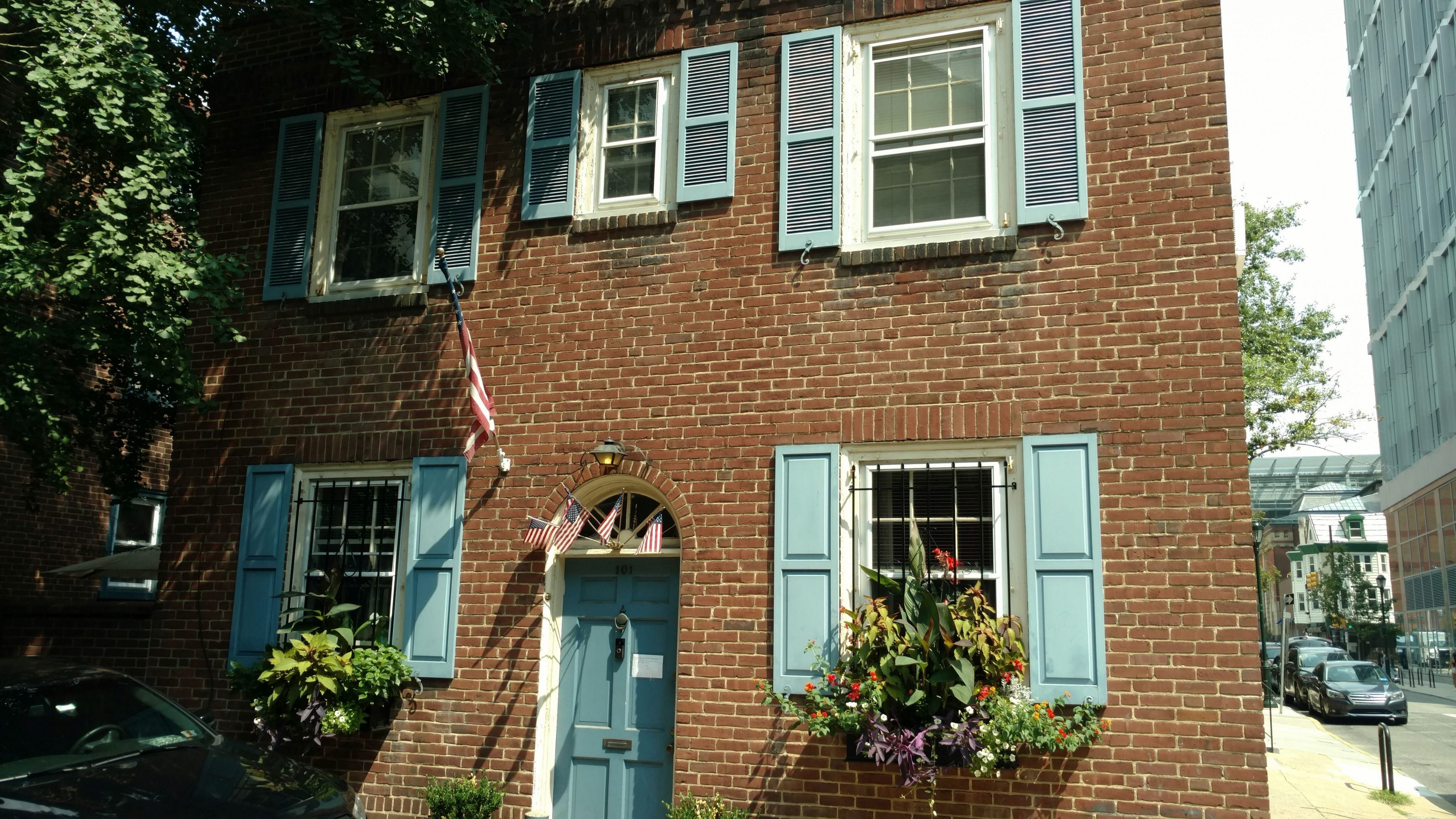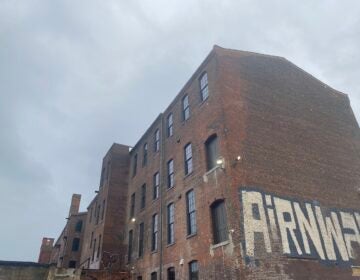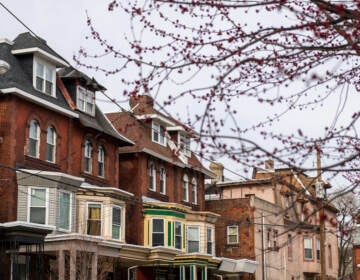An intimate rowhouse block holds its own as towers rise around it
But this stretch of Mole Street is actually quite singular: It is the only remaining block of rowhouses left in this part of Center City.

The 100 block of Mole Street — in Center City. (Jake Blumgart/PlanPhilly)
This story originally appeared on PlanPhilly.
—
The 100 block of Mole Street looks like a lot of older rowhouse blocks in Philadelphia, but with more trees. The shaded street, with its neatly kept brick homes, feels like a poster child for the City of Neighborhoods.

But this stretch of Mole Street is actually quite singular: It is the only remaining block of rowhouses left in this part of Center City. Office towers, condominium complexes, and parking garages soar over this cozy cluster of 30 houses, many of which date back to the early 1800s.
Michael Batley, of Anew Properties LLC, is the rental agent for the 25 (of 30) homes on the block owned by a family trust that dates back to the 1800s, when the progeny of Founding Father Robert Morris began buying homes there. (The other five houses are either owner-occupied or not owned by the trust.)

“Mostly, we rent to college-age kids or just-graduated young professionals,” said Batley, who also teaches property management at Temple University. “They’ll come in from out of town, and I’ll explain to them there is nothing else around you. This is it. This is the block. There isn’t another one.”
For generations, the descendants of Robert Morris have pulled rental income from the 100 block of Mole Street, although few, if any, of them live in the Philadelphia area anymore. The rowhouses survived the mid-century waves of demolition that leveled most of their neighbors because of the family trust’s stewardship.
In 2016, City Council President Darrell Clarke downzoned the block from CMX-4, one of the highest-density categories allowed under the zoning code, to RM-1 to reflect the current and historic use of the block. All the houses owned by the trust are rented by groups of roommates, from a posse of American Airlines flight attendants to cadres of art students.
Batley became the rental agent for the trust back in 2010, when an agent from Wells Fargo & Co. came to observe one of his property-management classes. At the end of the lesson, the man approached him and said the bank was responsible for a unique group of properties that were in need of a steward. Could he start the next day?
Batley owns and manages his own stock of historic properties across the city and has an affinity for older buildings. He immediately took to the collection of rowhouses, some of which date to the early 1800s and some of which are of a more recent 1940s vintage. (You can tell the difference because the two-century-old rowhouses have foundations of hand-laid stone and brick, while the World War II-era homes have poured-concrete foundations.)
“We are historic and kitschy and something where you can put your hands on [centuries] of age,” said Batley. “You know that people 200 years ago were living on your property, which is a cool feel. … We let go of a lot of things in this city to make it brand new. Why?”
The 100 block of Mole Street has an intimate feel. The interior of the street and the backyards are shaded by the street trees, and a pizza place holds court at the northeastern corner. Multi-hued chalk etchings mark the fronts of many of the houses, bearing messages like “The Mole Hole,” “Heart Mole Street Forever,” and “Beer is Great.”
The communal vibe is cemented by an annual block party that dates back 30 years. It takes place at the summer solstice (June 21) and is now known as the Molestice Festival, after it got supercharged in recent years by Brendan Walsh, who named his marketing company after the little block. As many as 1,400 people visit that day, and this year there were 10 bands, food trucks, and a bar in the pocket park that sits in the middle of the block.

“The block has a really friendly neighborhood feel,” said Justin Brame, a chiropractor who started his one-room business in the small restaurant-turned-office space at the southwest end of the street. “It’s such a hidden little gem. It’s an example of how Philadelphia is like an English muffin, with all these little nooks and crannies. You have to make just the right turn to catch it.”
The houses on Mole Street rent for $2,000 and less a month. They are small, with two to four bedrooms, and, as is the case with 1800s homes, curving staircases and hardwood floors.
To Batley’s knowledge, most of the renters on the block are in their 20s and 30s. There are no children and few, if any, married couples. But the little block of rowhouses evokes enough fond memories that former residents often come back for the Molestice Festival.
“Even though they’ve left and gone on to marriage, or another job, another city, they tend to want to come back,” Batley said proudly.
WHYY is your source for fact-based, in-depth journalism and information. As a nonprofit organization, we rely on financial support from readers like you. Please give today.







